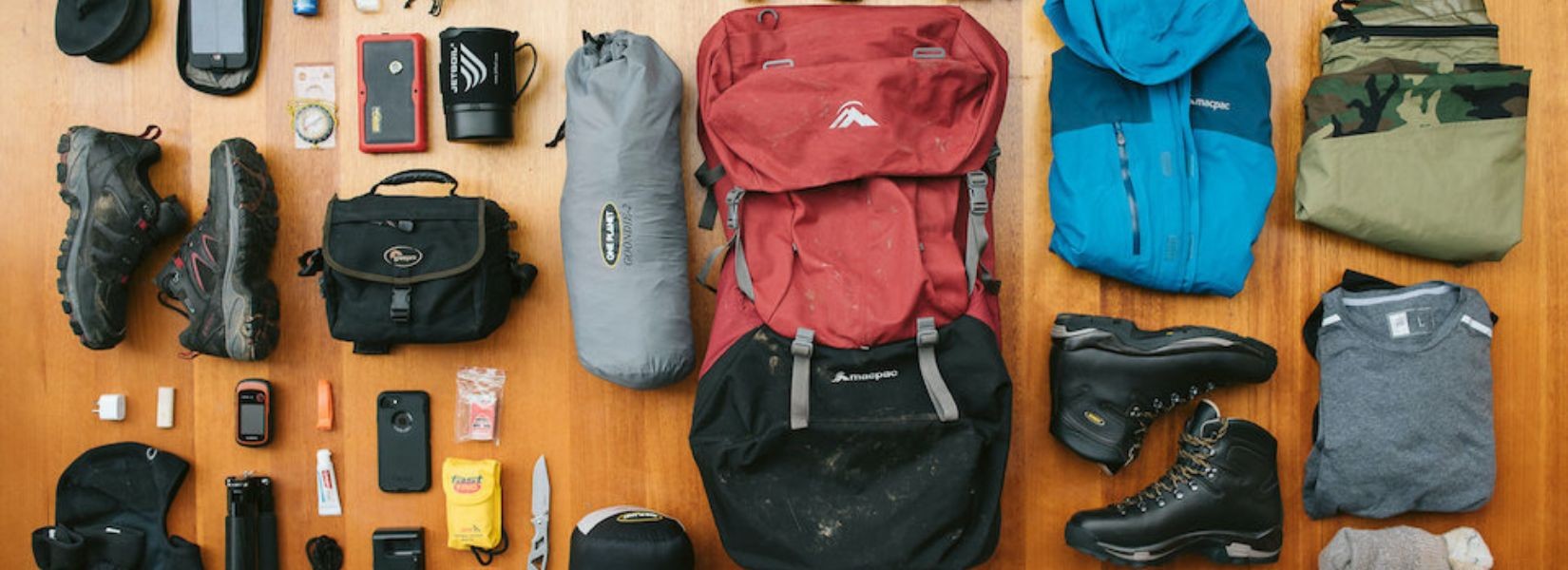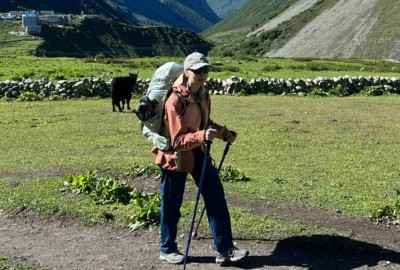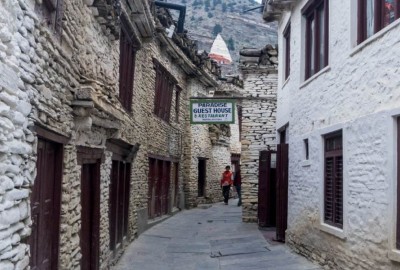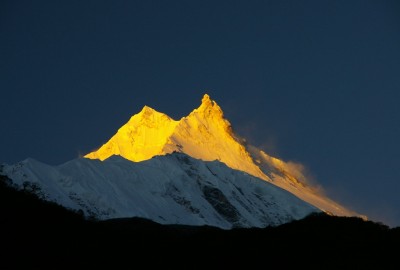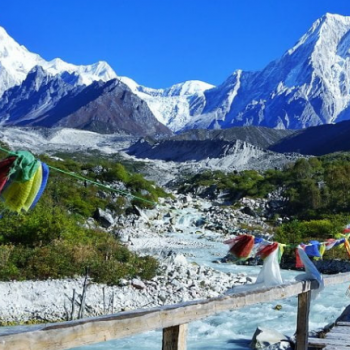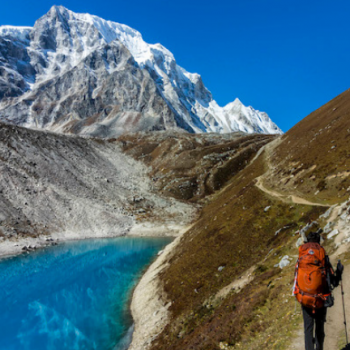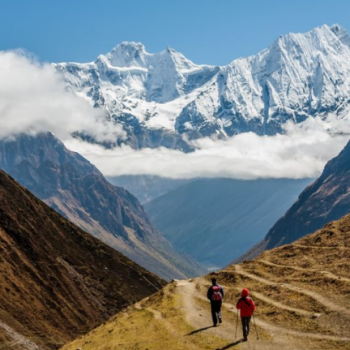The Manaslu trek packing list is quite helpful when trekking in this area because it gives hikers a clear notion of what to bring with them. Understanding the most important packing list is one of the crucial components to enjoying this wilderness adventure. For hassle-free travel, it is generally advisable to pack as little as possible.
Table of Contents
Plan your trip to Nepal
Customize your trip with help from a local travel specialist.
Compared to other well-traveled treks in Nepal, the Manaslu Circuit trek is a more remote and undiscovered journey. A lovely trip with an exceptional mingling of beauty, adventure, animals, culture, and lifestyle is yours to enjoy. It offers hikers the chance to travel through the Manaslu Conservation Area and is regarded as one of the best wilderness treks in all of Nepal. Your exploration of this off-the-beaten-path walk will be made simpler by our Manaslu Circuit Trek packing list.
Subsequently, the Manaslu Trek offers some of the most stunning vistas of the eighth-highest mountain in the world. You ascend to a height of about 5,210m (17,100ft) on the Manaslu trek, which involves changes in temperature, pressure, and oxygen content. You will undoubtedly need the appropriate equipment for this expedition, especially during adverse seasons. For the Manaslu Trek, it's crucial to have the proper daypack, clothing, and other gear and equipment. Otherwise, unnecessary problems could arise.
We have created the ultimate packing list that is meant to serve as a reference so that you can avoid worrying about what to bring on the Manaslu Circuit Trek. Most female trekkers have previously lamented that if they had known what to pack, they would have avoided the extra baggage on the journey. This list is not conclusive, but your final list will also depend on your preferences and judgment.
What Should I Bring on the Manaslu Circuit Trek?
Typically, your trip will begin at an altitude of 710 meters and ascend to a height of 5213 meters above sea level. The temperature and pressure vary as you gain altitude. Therefore, a variety of hiking tools and supplies are required to finish this task quickly. Making the best clothing choice for this expedition will be the hardest choice. In the same way that it can get hot and muggy at low altitudes but get chilly at high altitudes. As a result, we created the Manaslu Trek Packing List, which offers suggestions on what to bring.
Packing suggestions for the Manaslu Circuit Trek
- Prepare your gear in advance for your excursion.
- Don't overpack; don't stuff your suitcase with pointless items.
- Any extra or unnecessary items should be left in your hotel room in Kathmandu.
- To avoid under-packing as well, be sure to clarify your packing list with our adventure consultants.
- Understanding the weather conditions is crucial before you start packing.
- Since the Manaslu trek is a circuit trek, you won't take the same route back. Therefore, avoid leaving your belongings at the lodges with the expectation that you would pick them up later.
- Keep in mind that you can purchase or rent equipment for trekking in Kathmandu.
Manaslu Trek Important Packing List: The Absolute Must-Haves
Before you begin to gather the necessary items for your packing list, it is crucial to understand that the Manaslu trek is quite a difficult walk. A moderate level of physical fitness and advanced planning is required for this. If you pack lightly and wisely, you can conquer the Manaslu trek's difficulty with ease. Anyone may accomplish this walk with some preparation work.
The complete packing list of all the necessities is provided below.
Travel Paperwork
- A valid passport: additionally, make two or three photocopies of it, and keep a photo on your phone in case it gets lost or stolen.
- Vaccination Certificate: Please speak with your doctor or hospital further information.
- Airline Tickets and a Trip Itinerary: If you don't have a smartphone with you (with confirmation and trip itinerary).
- Nepal Visa: Except for certain nations, who are required to apply for visas at their country's embassy or consulate, Nepal visas are provided upon arrival at the Kathmandu airport.
- Passport-sized pictures: 4 passport-sized pictures are necessary for several things, such as licenses and local SIM cards.
- Money and Credit Cards: Along with your credit/debit card, you'll need cash (at least$200–300) for the trip.
- Travel Insurance: That pays for all of your trip-related medical expenses, flight cancellation fees, trip cancellation expenses, and rescue and air ambulance costs (if any). Both a paper copy and a digital copy should be kept.
Clothing List
The majority of trekkers are unsure of the ideal attire to pack for their journey. Although they would prefer to wear other clothes, some of them might not be practical for this excursion. As examples, consider the following:
Headwear
Sunscreen
Most trekkings last longer than a week, and the majority of the time you'll be walking outside in the sun. So, if you want to avoid being sunburned, wear sunscreen with a high SPF.
Sunglass
Since UV radiation is more intense at higher elevations when hiking, it can harm not only your skin but also your eyes. You can thus carry dark-shaded UV-protective sunglasses to safeguard your eyes.
Sunhat
The sun is intense at higher altitudes, therefore you shouldn't estimate its strength there. Therefore, wearing a sunhat will shield your face and scalp from harm. Make sure it is portable and lightweight.
Warm Hat
It is vital to pack a heat retention cap to wear at night because the nights are chilly and frigid. When sleeping, you ought to keep your head warm.
Buff
A stretchy, versatile buff can be worn in a variety of ways. Such as a neck gaiter, mask, headband, and many others. This fabric is particularly practical since it keeps your neck warm and protects your lips from drying out.
External Bodywear
In the high region, the weather is erratic, so you might experience all seasons in a single day. In general, you should dress in three layers, depending on how well you can handle the cold. Carry an extra outer jacket if you tend to get cold easily.
Base Layer
The base layer is the first layer of clothing you put on before hiking at higher elevations. To keep your body warm, these clothes should be cozy and heat-retentive as they are the closest to your body. You should choose a base layer of clothing that can quickly wick away perspiration. It prevents the entry of wind into your body.
Second Layer
Long or short-sleeved trekking t-shirts make up the second layer because they will be worn on top of the base layer. You should pack t-shirts since they are lightweight, comfy, and quick to dry. Since you'll be wearing t-shirts every day, you may bring up to four.
Fleece Jacket
Fleece jackets are comprised of lightweight, soft fabric. They aid in maintaining body heat. You won't be able to feel the cold when you put this underneath your outer jacket.
Outer Jacket
The top layer of clothing that serves to block the wind is an outer jacket. We advise you to verify the jackets are windproof and waterproof before purchasing. Outer layers are perfect for down coats.
Raincoats
Carrying a rain jacket is a necessity if you are going between June and August. Since there are frequent strong rainstorms in the lower region throughout these months. You should purchase high-quality raincoats and bag covers because it is monsoon season.
Inner Bodywear
Sports Bra
It is advised that women carry and wear sports bras rather than hook bras due to their comfort and ease of movement. Any unfavorable circumstances on your walk should be avoided.
Underwear
You will be in the Manaslu region for around two to three weeks throughout this trek. It is advised that you carry comfortable, moisture-wicking undergarments. Itching, stink, or discomfort are not things you would want.
Shorts and Trousers
You should bring hiking shorts because the lower part tends to be warm. Hiking trousers are advised while ascending because it is cold and windy in the high altitudes.
Hand Wear
Outer Gloves
When it comes to protecting your hands from the elements—cold, wind, and snow—outer gloves serve a similar purpose to outer jackets. In addition to being waterproof and windproof, they aid in keeping your hands warm.
Inner Gloves
In order to create a base layer, you will put on inner gloves before insulating gloves. You can keep your hands warm while wearing these lightweight thermal gloves. It often is constructed of fleece material and makes finishing minute tasks simple.
Footwear
Hiking Boots
Choosing a hiking boot is a crucial and challenging undertaking considering that you'll be wearing the footwear the entire voyage. Consequently, it should be cozy and waterproof while walking. You should choose ankle-supporting, high-quality boots when making your choice. Since you do not want blisters on your feet, it should also fit your feet comfortably.
Thermal Socks
Since the nights are colder at higher altitudes, wearing thermal socks is recommended to keep your feet warm. After the long day's walk, you might also wish to change into a new pair.
Trekking Sandals
After a long day of trekking, your feet could feel restricted in those hiking boots. As a result, you can bring along a pair of cozy hiking sandals to wear while touring the locations where you'll be spending the day. As a result, you can bring along a pair of cozy hiking sandals to wear while touring the locations where you'll be spending the day.
Hiking Socks
It is advised to wear hiking socks to keep your foot and leg warm. To avoid smelly feet, make sure they are sweat-absorbing when you buy them.
Gaiters
Carry gaiters to wear outside of your boot if you intend to trek during the rainy or winter months. It protects them from mud and leeches and helps keep them dry on the inside.
Sleeping Accessories
Sleeping Bags
It is required to bring a sleeping bag with you when hiking as it aids in warming your body more quickly than blankets. A plus if you're not happy with the lodging options offered by the tea houses. When choosing a sleeping bag, search for ones that are portable for the hike.
Sleeping Bag Liner
When living at high elevations, sleeping bag liners help to add warmth. They also dry rapidly and require little maintenance.
Backpacks
Duffle Bag
If you are hiking with a porter, this is a great item to bring. Since many pieces may be adjusted and it is simpler to load and unpack stuff.
Daypack
If you intend to employ a porter, a daypack is essential since the porters' bags will be picked up in person after the day is through. So that you can transport stuff that you need during the day, for instance, water bottles, cameras, papers, etc.
Backpack
A backpack is an excellent option if you are traveling without a porter. Since it is more convenient and easier to carry on a trek. When purchasing them, choose a high-quality backpack with a lengthy lifespan.
Backpack Cover
Keeping your backpack dry and clean will be quite beneficial when traveling during the rainy season. To determine whether the cover will fit, try it on with your bags filled.
Trekking Supplies
Headlamp
This is useful if you have to start your travel early at night and are out on foot. It can be used without a second hand and is very simple to operate.
Trekking Poles
Trekking poles are a crucial tool to bring while going on a lengthy hike at a high altitude. It relieves pressure on your knees and is especially helpful when going downhill.
Water Bottle
Water bottles are a must for this hike because you need to stay hydrated the entire time. The cost of water may become more apparent as you ascend. Therefore, if you have a water bottle with you, you can replenish it in the tea houses you'll be staying at.
Microspikes
These tiny spikes make trekking over snow more comfortable. They are close to the bottom of your shoes. For those who travel light, they are compact and practical.
Medical Kit
First Aid Kit
When embarking on a trek, you should always carry a current first aid kit. While climbing at high altitudes, you'll need things like painkillers, bandages, and a lot more.
Water Purification Tablets
In case there isn't a trustworthy source of drinking water, it is always a good idea to carry some water purification tablets with you. It protects against tainted water.
Extra Packing List Items For Manaslu Trek in Different Seasons
Only use the above packing list as a guide. Depending on the time of year and length of the walk, you may need to improvise a little with your packing list. According to your needs, you can either increase the number of items or eliminate any duplications from the list. Choose your trekking supplies based on the local environment and weather. For instance, if you're hiking in the summer, you can bring fewer items of wool and warm clothing, and if it's raining, you need to have the appropriate rain gear. You can create a list for yourself using the provided list as a guide.
Here are a few additional trekking items that are suggested for you to bring on your Manaslu Circuit trip in various seasons.
Manaslu Trekking Packing List in Spring Season
Late spring will be hot in comparison to early spring, which is a little chilly. There is a possibility of some rain during this time. You can also bring the following goods on this expedition.
- Raincoat
- Pest repellant
- Waterproof Backpack cover
- Extra plastic bags
Manaslu Trekking Packing List in Summer Season
The difficulties to be conquered this season include the hot weather and the monsoon rain. In the lower region, hot and humid weather breeds a large number of insects and vermin. Throughout the entire walk, the view of the snow-capped mountains has been obstructed by the cloudy sky. These additional items are advised if you trek in the summer, which is between June and August.
- Rain jacket
- Hiking shirts, half and full (sweat-absorbing material)
- Waterproof trouser
- Waterproof backpack cover
- Hiking shorts
- Insect repellent
- Waterproof gaiters
- Plastic bags cover your clothes, important documents, cameras, and batteries.
Manaslu Trekking Packing List in Autumn Season
Trekking is best done in the fall. This time of year, there is less likelihood of rain, but you should still be ready because the Himalayan weather is unpredictable. You must bring the following equipment when trekking the Manaslu Circuit.
- A DSLR
- Rain gear
Manaslu Trekking Packing List in Winter Season
The Manaslu region experiences extreme cold during the winter because of snowfall and low temperatures. To minimize trouble when trekking in the winter, you need to be well-equipped. These are some unique items to bring on the Manaslu Circuit Trek during the winter.
- Thermal jacket
- Windproof and waterproof jacket
- Warm gloves
- Thermal trousers
- Woolen socks
- Thermal undergarments
- Woolen hat
- Snowproof hiking boots
- Muffler
- Rain gears (in case of snowfall)
You can also buy or used trekking gears from our facebook group too. In the meantime, if you are looking to trek Manaslu then contact us. We will help to plan the most memorable trip for you.

